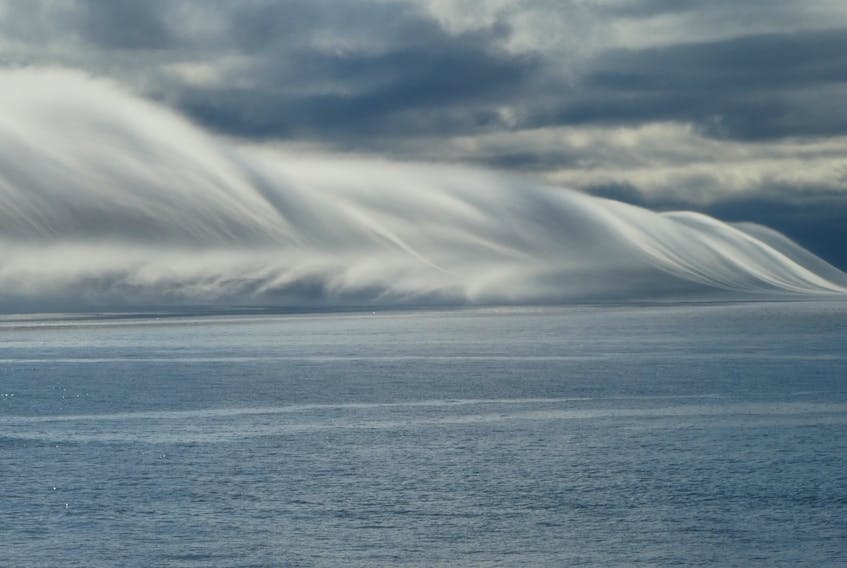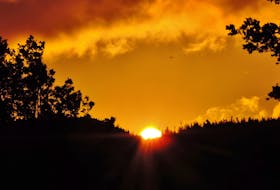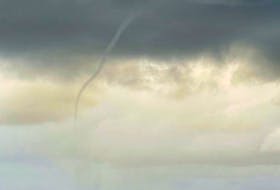The other day someone asked me how I come up with column ideas every day. I don’t. Many of them come from you.
I get emails, snail mail, tweets and Facebook posts from every corner of Atlantic Canada. Some of them contain questions, some have photos attached and others are simply wonderful observations. I welcome them all.
The idea for today’s column came from my boss, Mark Lever. Mark and Ross McNeil were conducting business and supporting local in Chester, N.S. one day last week when Ross asked Mark to ask me about the wall of fog that is often seen lurking offshore at this time of year.
I love the fog. Back on the farm, Grandma convinced my sister and me that it was great for our complexion. Her glass was usually half full, but I digress.
Back to the fog we go. There are 10 types of fog. They are advection fog, evaporation fog, freezing fog, frontal fog, ground fog, hail fog, ice fog, precipitation fog, radiation fog, and upslope fog.
The fog that we see snuggling up to our coastlines late in the day only to slither away a few hours after sunrise is coastal fog. Coastal fog usually occurs in the spring and early summer months. You might have noticed coastal fog is not on the list of 10 fogs, but it’s a type of advection fog; it’s the result of cold coastal waters and a moist, warmer layer of air riding above it.
This weekend, water temperatures just off Nova Scotia’s south shore range from five to nine degrees. With a southwesterly wind, warm, moist air is transported from the Gulf of Mexico into our coastal regions. As that air gets close to our coasts, it rides over the much colder water. That colder water surface cools the air just above it, and that drop in temperatures takes the humid air down to, or close to, the dewpoint. When the temperature cools to its dew point temperature, the air becomes saturated, which allows for condensation and fog. This is also the temperature at which moist air will condense on an object, forming dew, hence “dewpoint.”
Once that happens, the coastal fog bank forms and is transported by the prevailing wind. If that wind is onshore, then the fog will ride slightly inland. As that water-cooled air moves ashore, the bottom layer is warmed by the warmer land below it. At that point, the air temperature rises above the dewpoint and the fog dissipates.
After sunset when the land begins to cool and wind drop off, the fog can settle onshore for the night.
After sunrise, on a cloudless morning, the sun’s rays will dry out the fog bank from the top down. We often say fog “lifts,” because that's what we hear. However, most often, the fog dissipates or “mixes out” as the wind stirs the air.
Did you know?
The foggiest place in the world is the Grand Banks off the island of Newfoundland. Fog is frequent there as the Grand Banks is the meeting place of the cold Labrador current from the north and the much warmer gulf stream from the south. On average, they experience more than 200 foggy days in a year.
That’s a lot of fog, but remember, it’s also a free facial. Thanks for asking Ross!
- Want more weather information? Visit your weather page.
- Have a weather question, photo or drawing to share with Cindy Day? Email [email protected]
Cindy Day is the chief meteorologist for SaltWire Network









